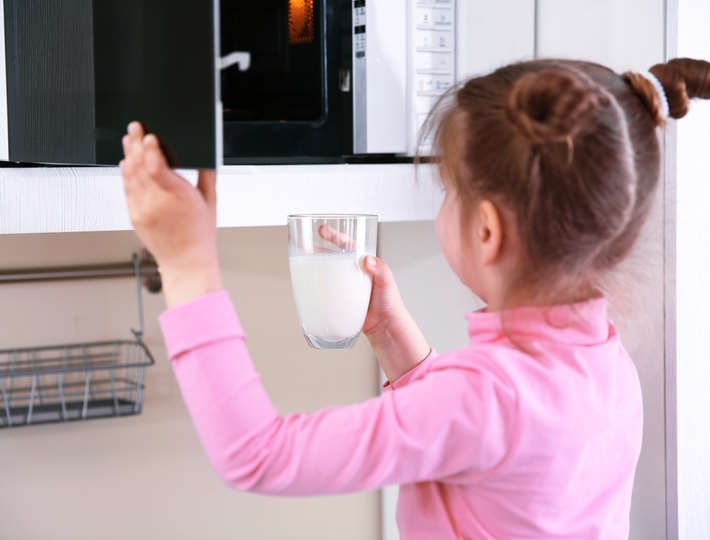When it comes to using a microwave, many of us often wonder about the safety of certain materials, especially glass. Can you safely microwave a glass? This question has sparked a lot of debate among avid microwave users. In this blog post, we will explore the various aspects of microwaving glass to help you understand the safety precautions, proper glassware selection, microwave compatibility, heating techniques, and cooling and handling tips involved. By the end of this post, you will have a clearer understanding of whether it is safe to microwave glass and how to do so correctly to prevent any mishaps. Stay tuned as we delve into the world of microwaving glass and discover the dos and don’ts to ensure a safe and enjoyable cooking experience.Learn the essential safety precautions, glassware selection, microwave compatibility, proper heating techniques, and cooling/handling tips for successful food preparation at home.
Safety Precautions

When it comes to using glassware in the microwave, it’s important to take safety precautions to avoid any accidents or damage. One important thing to remember is to always check if the glassware is labeled as microwave-safe. Not all glass materials are suitable for use in the microwave, so it’s best to stick to those that are specifically designed for this purpose.
Another safety precaution to keep in mind is to avoid using glassware with any metal accents or decorations in the microwave. Metal can cause sparks and potential fires when exposed to the high heat of the microwave. It’s best to opt for plain, clear glassware without any metal parts to ensure safe heating.
Lastly, make sure to always handle hot glassware with oven mitts or kitchen towels to prevent burns or injuries. Glass can retain heat for a long time, so it’s important to use proper heating techniques and be cautious when removing hot items from the microwave.
Glassware Selection

When it comes to selecting glassware for use in the microwave, there are a few important factors to consider. First and foremost, it is crucial to choose microwave-safe glassware that is labeled as such. This ensures that the glass can withstand the heat generated by the microwave without cracking or shattering.
Additionally, it is important to avoid using glassware that is decorated or embellished with metallic accents, as these can cause sparks and potentially damage the microwave. Opt for plain, clear glassware instead to ensure safe and effective heating.
Lastly, always check the manufacturer’s guidelines for any specific recommendations regarding the use of glassware in the microwave. By following these tips, you can safely select the right glassware for all your microwave heating needs.
Microwave Compatibility

When it comes to using a microwave, it is important to consider the compatibility of the materials you are using. One common question that many people have is, Can you microwave a glass? The answer to this question depends on the type of glassware you are using.
Some glassware is specifically designed to be microwave compatible, while others are not. It is important to check the manufacturer’s instructions before using glassware in the microwave to ensure that it is safe to do so.
Using glassware that is not microwave safe can result in the glass cracking or shattering, which can be dangerous. Be sure to always err on the side of caution when it comes to using glass in the microwave.
Proper Heating Techniques

When it comes to properly heating food in the microwave, it is important to follow some key techniques to ensure safety and optimal results. One important technique is to cover the dish with a microwave-safe lid or plastic wrap to prevent splatters and help the food cook more evenly. Additionally, it is crucial to stir the food halfway through the heating process to promote uniform heating throughout.
Another important heating technique to keep in mind is to arrange the food in a single layer on the dish to facilitate even cooking. It is also recommended to rotate the dish during cooking to prevent hot spots and ensure that the food heats up uniformly. Lastly, allow the food to rest for a few minutes after heating to continue cooking and reach its optimum temperature.
By following these proper heating techniques, you can ensure that your food is heated thoroughly and safely in the microwave. Remember to always use microwave-safe containers and utensils to avoid any accidents or damage to your kitchenware. With these techniques in mind, you can enjoy convenient and efficient microwave heating for all your favorite dishes.
Cooling and Handling Tips

When it comes to safely handling hot glassware, it’s important to remember to always use caution and proper techniques. One of the key safety precautions is to allow the glassware to cool down before handling it. This will help prevent burns and injuries.
When selecting glassware for use in the microwave, it’s important to choose pieces that are specifically labeled as microwave compatible. Using glassware that is not designed for microwave use can result in breakage or even shattering, posing a safety hazard.
Proper cooling and handling tips include using oven mitts or kitchen towels to protect your hands from the heat of the glassware. Additionally, be sure to place hot glassware on a heat-safe surface to prevent damage to countertops or tables. By following these tips, you can ensure safe and effective cooling and handling of glassware in the microwave.

